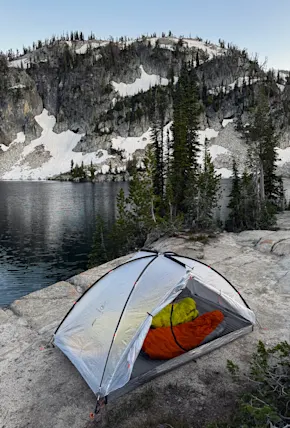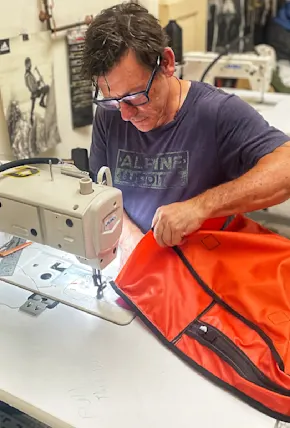At mile 19 on day two a familiar fatigue had set in. Weighed down by a massive 35 pound pack, searing pain sprouted between my shoulder blades, thighs burned, heels hurt. The faces of my hiking partners told a similar story—uncomfortable, and accepting. This wasn’t our first backpacking trip. Far from it. We knew the feeling well. The juice would be worth the squeeze, we told ourselves. The discomfort was just part of the backpacking experience. Years later I discovered it didn’t have to be.
In the world of going out into nature with all you need on your back, most people fall into one of two camps, traditional or lightweight, with the vast majority of outdoor recreationalists firmly seated in the former. I did. Maybe you do, too. But what’s the difference? And what changed my perspective? A single ultralight backpack is the answer to the second question. As to the first, let’s dive in.
Ultralight Backpacking Guide Table of Contents

The author wearing a Hyperlite Mountain Gear Junction Pack
Traditional vs Ultralight Backpacking (vs Lightweight)
The traditional backpacking checklist includes the “10 Essentials” plus a comfortable-sized tent, sleeping setup, and a change of clothes or two—and don't forget the comfort items like a deck of cards, small lantern, and camp shoes, plus a few “just in case” items like emergency layers, spare fuel canisters, extra food, etc because “you never know.” The common sense theme of traditional backpacking says the longer the trip, the more gear you need to bring. Packed in a 50 to 65 liter capacity backpack from a major brand like Osprey, Deuter, Gregory, REI, etc, the typical traditional backpack for three nights will likely weigh around 35 pounds or more. Keep in mind this the base weight, meaning the total weight of all items in the pack, including the pack, but not including consumables like food and water.
The lightweight backpacking approach refines the essentials, embraces a “less is more” attitude—or better yet, “every ounce counts”—and eliminates weight at every opportunity, aiming for a base weight of 20 pounds or below. Ultralight hiking (aka UL) brings base weight down to just 10 pounds. Lightweight and UL hikers will swap a tent for a tarp or shelter, a sleeping bag for a down quilt, an air mattress for a pad or even a half-length foam pad, and often sleep in the same clothes they hike in. Ultralight packs weigh around one pound when empty, and max out around 30 liters in carrying capacity. The goal is to carry nothing more than one needs to achieve their goal, and nothing less than is necessary to do so comfortably, safely, and precisely. Here, or somewhere around it, is the realm of most hardcore thru-hikers.













